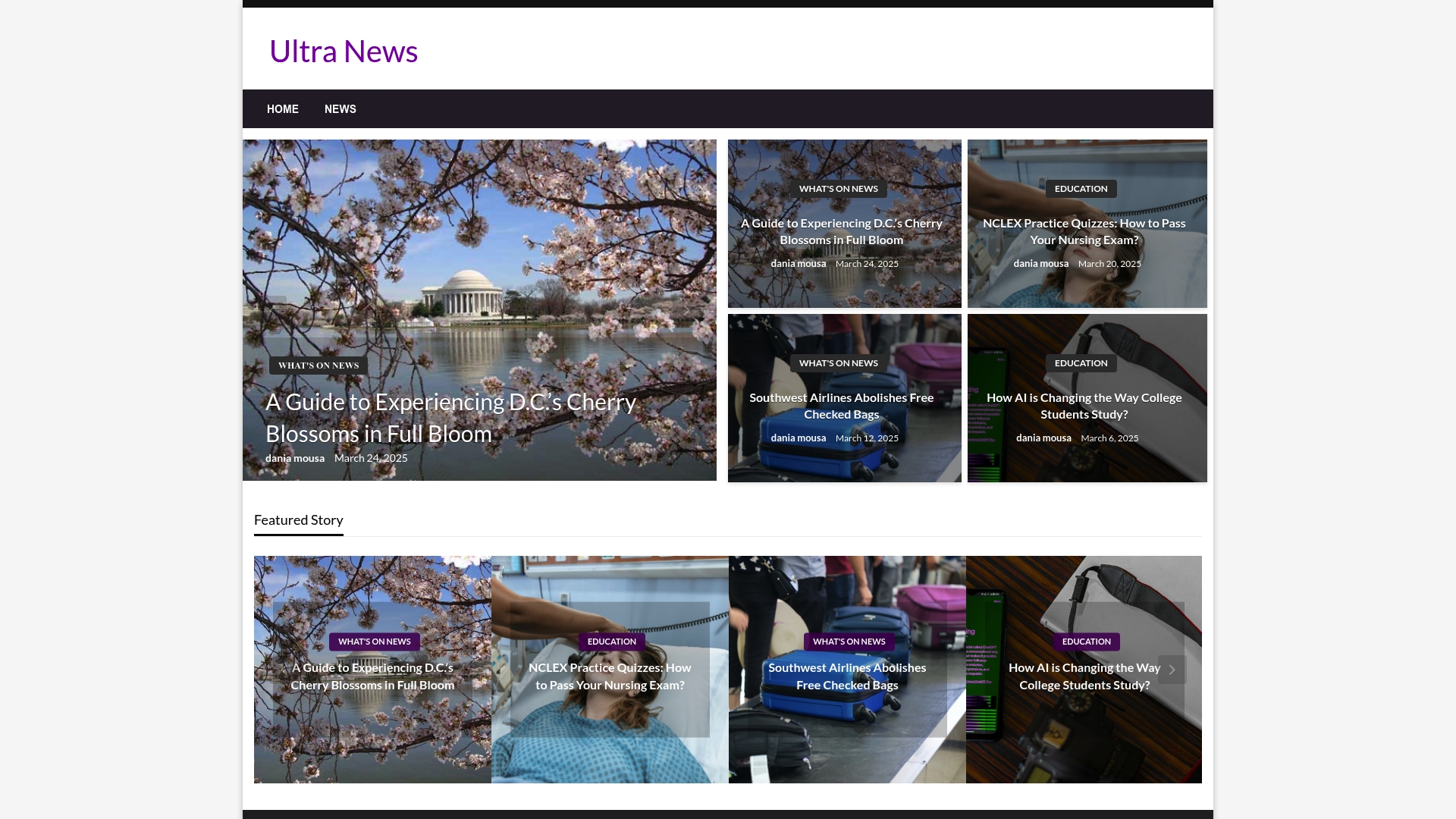
You probably think you know where your news comes from and who controls the story. Nearly 68 percent of digital news consumers are under age 50 while traditional newspapers still hold onto millions of loyal readers and viewers. That sounds pretty straightforward. But rewind for a second. What most people miss is how the platform you choose shapes not only what you read but how you think. The real question is not just trusting your source but learning to spot the subtle differences and hidden traps each type brings to your feed.
Table of Contents
- Understanding The Main Types Of News Sources
- Comparing Traditional And Digital News Outlets
- How To Evaluate News Source Reliability
- Tips For Finding Trusted News Sources In 2025
Quick Summary
| Takeaway | Explanation |
|---|---|
| Understand the types of news sources. | Familiarize yourself with traditional print, broadcast, and digital platforms to navigate media effectively. |
| Evaluate reliability using systematic methods. | Apply techniques like the CRAAP test to assess news sources for credibility and trustworthiness. |
| Diversify your news consumption. | Seek news from various perspectives to avoid echo chambers and develop a well-rounded viewpoint. |
| Leverage technology for verification. | Use fact-checking tools and platforms to ensure accuracy in the news you consume. |
| Build media literacy skills. | Enhance your ability to critically evaluate news by engaging in educational resources and workshops. |
Understanding the Main Types of News Sources
News sources form the backbone of how we understand the world around us. These platforms deliver critical information across various channels, each with unique characteristics and approaches to reporting. Understanding the main types of news sources helps consumers become more informed and discerning about the information they consume.
Traditional Print Media
Print media represents one of the oldest forms of news dissemination. Newspapers and magazines have long been trusted sources of information, providing in-depth reporting and comprehensive analysis. Pew Research Center reveals that while digital platforms are growing, traditional print media still maintains a significant audience, particularly among older demographics.
Traditional print sources offer several unique advantages. They typically employ professional journalists with extensive fact-checking processes, ensuring higher standards of accuracy. Long-form articles in newspapers and magazines allow for more nuanced exploration of complex topics compared to shorter digital formats. Print media often provides editorial oversight that helps maintain journalistic integrity.
Broadcast News Sources
Television and radio represent critical broadcast news sources that continue to play a significant role in information delivery. These mediums offer real-time updates and visual storytelling that can make complex news more accessible. Nielsen Media Research indicates that broadcast news remains a primary information source for millions of Americans, especially during breaking news events.
Broadcast news sources are characterized by their immediacy and ability to provide live coverage. Television networks like CNN, Fox News, and local stations deliver breaking news, interviews, and investigative reports. Radio news programs offer similar real-time information, often providing updates during commutes and throughout the day. These sources excel at presenting urgent information quickly and dramatically.
Digital and Online News Platforms
Digital news platforms have revolutionized how people consume information. Websites, social media channels, news apps, and online publications now compete with traditional media in delivering instantaneous news updates. These platforms offer unprecedented accessibility, allowing users to access news from multiple sources instantly.
Online news sources provide unique advantages such as multimedia content, interactive reporting, and the ability to quickly update stories as new information emerges. However, they also present challenges related to misinformation and rapid, sometimes unverified reporting. Consumers must develop critical media literacy skills to navigate these digital news environments effectively.
Understanding these diverse news sources empowers individuals to make informed decisions about their media consumption. Each type of news source offers distinct benefits and limitations, making it crucial for readers to diversify their information intake and approach news with a critical, discerning perspective.
To help readers quickly compare the characteristics of traditional print, broadcast, and digital news sources, the following table summarizes their unique advantages and challenges:
| News Source Type | Unique Advantages | Common Challenges |
|---|---|---|
| Traditional Print Media | In-depth coverage; professional fact-checking; editorial oversight | Limited immediacy; declining younger audience |
| Broadcast News Sources | Real-time updates; visual storytelling; accessibility | Potential for dramatization; limited depth in reporting |
| Digital/Online News Platforms | Instant access; multimedia/interactive content; real-time updates | Misinformation risks; need for media literacy skills |
Comparing Traditional and Digital News Outlets
The landscape of news consumption has dramatically transformed with the emergence of digital platforms, creating a complex ecosystem where traditional and digital news outlets coexist and compete. This evolution has fundamentally reshaped how people access, consume, and interact with news content.
Content Production and Distribution Dynamics
Traditional news outlets have historically controlled content production through structured editorial processes, with professional journalists crafting carefully researched stories. In contrast, digital platforms enable rapid, decentralized content creation. Pew Research Center reveals significant differences in news coverage between traditional and digital platforms, noting that social media tends to amplify emotionally charged topics while traditional media maintains a more consistent news agenda.
Digital platforms introduce unprecedented speed and accessibility. News can now be published instantly, allowing real-time updates and crowd-sourced reporting. This democratization of news production means anyone with internet access can potentially contribute to information dissemination, challenging traditional journalistic gatekeeping mechanisms.
Audience Engagement and Consumption Patterns
Audience interaction with news sources has fundamentally changed. Nieman Foundation research highlights that digital news consumers are predominantly younger, with 68% under 50 and 29% under 30. These audiences prefer interactive, multimedia-rich content that traditional print and broadcast media struggle to provide.
Digital platforms offer personalized news experiences through algorithmic recommendations, allowing users to curate their news consumption. This customization contrasts sharply with traditional media’s one-size-fits-all approach. However, this personalization also raises concerns about creating echo chambers that reinforce existing beliefs.
Credibility and Information Verification
The shift to digital platforms has introduced complex challenges in news credibility. Political Polarization research demonstrates that online news consumption frequently leads to the formation of partisan communities, where individuals primarily consume news that aligns with their preexisting political views.
Traditional news outlets typically maintain rigorous fact-checking processes and editorial standards. Digital platforms, while offering immediacy, often lack similar verification mechanisms. This difference creates a critical challenge for consumers in distinguishing between verified reporting and potentially misleading information.
The comparison between traditional and digital news outlets reveals a nuanced media landscape. Each platform offers unique strengths and limitations. Traditional media provides depth, editorial oversight, and established credibility, while digital platforms deliver speed, accessibility, and interactive experiences. Informed news consumers increasingly recognize the value of navigating and understanding both ecosystems to gain comprehensive insights.
How to Evaluate News Source Reliability
In an era of information overload and widespread misinformation, developing critical skills to evaluate news source reliability has become essential. Consumers must learn sophisticated strategies to distinguish credible reporting from potentially misleading content.
Understanding Fundamental Reliability Criteria
Research on News Website Reliability identifies six critical dimensions for assessing news source trustworthiness: content quality, political alignment transparency, author credentials, professional standards, source verification, and overall institutional reputation. These criteria provide a structured approach to evaluating information sources beyond surface-level impressions.
Content evaluation requires examining the depth, context, and balance of reporting. Reliable news sources present multiple perspectives, cite credible references, and avoid sensationalism. Professional journalists maintain clear distinctions between factual reporting and opinion pieces, ensuring readers can differentiate objective news from editorial commentary.
Applying Systematic Evaluation Techniques
The CRAAP Test, developed by academic librarians, offers a comprehensive framework for assessing information reliability. This method examines five key dimensions: Currency (how recent and updated the information is), Relevance (the source’s applicability to your specific context), Authority (the credibility of the author or publishing organization), Accuracy (verifiability of information), and Purpose (understanding the motivations behind the publication).
Practical application of the CRAAP test involves asking critical questions. For currency, determine when the information was published and whether it remains current. Relevance requires assessing whether the source directly addresses your information needs. Authority demands investigating the author’s credentials, institutional affiliations, and subject matter expertise.
The CRAAP Test is a widely recommended method for evaluating the reliability of news sources. The table below breaks down its five criteria and key questions to consider for each:
| CRAAP Criteria | What It Evaluates | Key Question to Ask |
|---|---|---|
| Currency | Timeliness | Is the information up-to-date? |
| Relevance | Applicability | Does it meet your information needs? |
| Authority | Source credibility | Who is the author/publisher? Trusted? |
| Accuracy | Verifiability | Is the information supported by evidence? |
| Purpose | Reason for existence | Is it to inform, persuade, or sell? |
Red Flags and Warning Signs
Recognizing potential indicators of unreliable news sources is crucial. Warning signs include excessive emotional language, lack of clear sourcing, consistent ideological bias, and headlines that do not match article content. Reputable news organizations provide transparent information about their editorial processes, correction policies, and funding sources.
Fact-checking websites and cross-referencing information across multiple credible sources can help validate news reports. Be suspicious of sources that exclusively confirm preexisting beliefs or use inflammatory rhetoric. Reliable news organizations maintain professional standards, provide context, and demonstrate a commitment to objective reporting.
Evaluating news source reliability is an ongoing skill that requires active engagement and critical thinking. By developing systematic assessment techniques and maintaining a skeptical yet open mindset, consumers can navigate the complex media landscape more effectively. Understanding the nuances of information reliability empowers individuals to make informed decisions and maintain a well-rounded perspective on current events.
Tips for Finding Trusted News Sources in 2025
Navigating the complex media landscape in 2025 requires strategic approaches to identifying reliable news sources. With the proliferation of digital platforms and information channels, consumers must develop sophisticated strategies to ensure they receive accurate and credible information.
Leveraging Technological Tools and Verification Platforms
Technology now offers powerful tools for news source verification. Media Bias/Fact Check provides comprehensive assessments of news outlets’ political leanings and factual reporting accuracy. These platforms use advanced algorithms and expert analysis to rate news sources across multiple dimensions, helping consumers make informed choices.
Advanced fact-checking technologies and AI-driven verification tools have emerged as critical resources. These platforms cross-reference multiple sources, analyze linguistic patterns, and identify potential misinformation signals. Users can now access real-time credibility scores for news articles, providing an additional layer of verification beyond traditional assessment methods.
Developing a Diverse News Consumption Strategy
Reuters Institute Digital News Report recommends a multi-source approach to news consumption. This strategy involves deliberately seeking out news from sources with different perspectives, political leanings, and geographical origins. By diversifying news inputs, consumers can develop a more nuanced understanding of complex issues and reduce the risk of falling into echo chambers.
Effective news consumption in 2025 requires active engagement. This means deliberately reading beyond headlines, checking source citations, and comparing reporting across multiple platforms. Subscribers to reputable news aggregation services can access curated content from verified sources, providing a balanced and comprehensive news experience.
Building Personal Media Literacy Skills
Media literacy has become a critical skill in the digital age. Educational resources and online courses now focus on teaching individuals how to critically evaluate news sources. Key skills include understanding journalistic standards, recognizing potential bias, and developing a systematic approach to information verification.
Professional journalism organizations offer workshops and online resources to help consumers become more discerning news consumers. These programs teach techniques for identifying credible sources, understanding the difference between news and opinion, and recognizing potential manipulation tactics used in modern media.
Finding trusted news sources in 2025 is not about finding a single perfect source, but about developing a sophisticated, critical approach to information consumption. By combining technological tools, diverse source strategies, and robust media literacy skills, consumers can navigate the complex media landscape more effectively. Explore our guide on media intelligence to further enhance your news consumption strategies and become a more informed global citizen.

Frequently Asked Questions
What are the main types of news sources?
The main types of news sources include traditional print media (newspapers and magazines), broadcast news sources (television and radio), and digital and online news platforms (websites and social media).
How can I evaluate the reliability of a news source?
You can evaluate reliability by applying the CRAAP test, which assesses Currency, Relevance, Authority, Accuracy, and Purpose of the news source. Look for transparency in reporting and the presence of credible references.
What are some common challenges with digital news platforms?
Common challenges with digital news platforms include the spread of misinformation, rapid reporting that may lack verification, and the potential for echo chambers that reinforce biases.
How can I diversify my news consumption?
To diversify your news consumption, seek out sources from different perspectives, political orientations, and geographical areas. Engage with a variety of formats such as articles, videos, and podcasts to get a well-rounded view of current events.
Take Control of Your News Journey with Ultra News
Are you finding it hard to distinguish trustworthy news from unreliable sources? As explored in our guide, navigating the maze of digital platforms, discovering credible reporting, and avoiding misinformation are real challenges today. Readers want relevant articles, fact-checked updates, and a mix of educational content to sharpen their media literacy.

Ultra News is designed with you in mind. You get organized archives and critical guides so you always know the source and context of each story. The site makes it easy to access up-to-date news and practical education for evaluating what you read. Explore the latest headlines in our What’s on News section to see how top stories are curated from across the world. Gain lasting confidence by browsing our Education guides and revisit our main site to keep informed every day. Start building your news expertise now—don’t settle for uncertainty in 2025.




